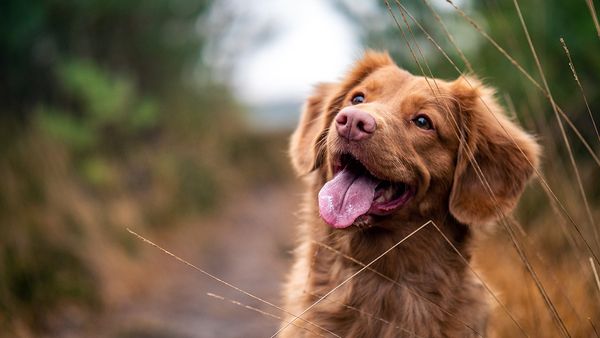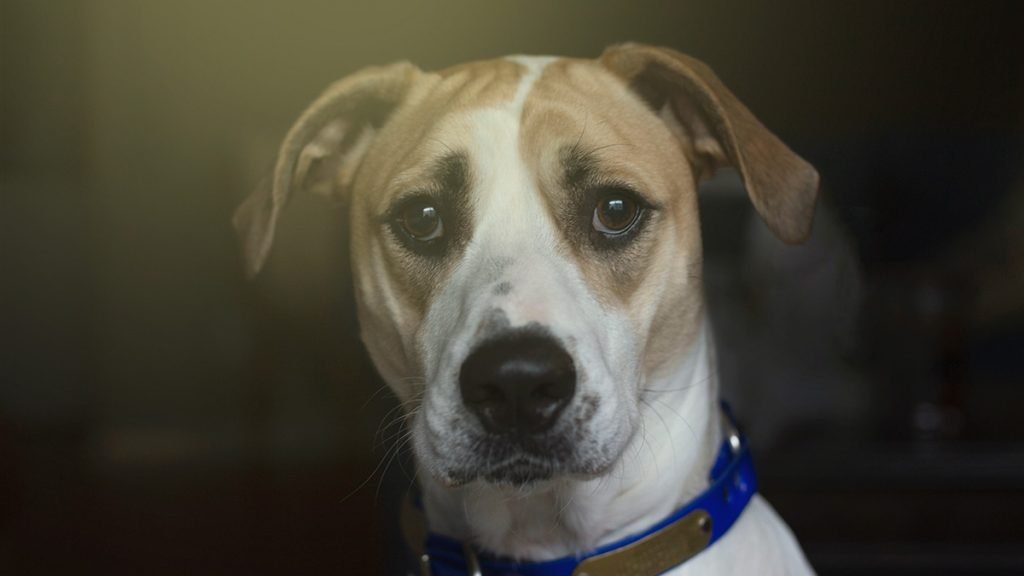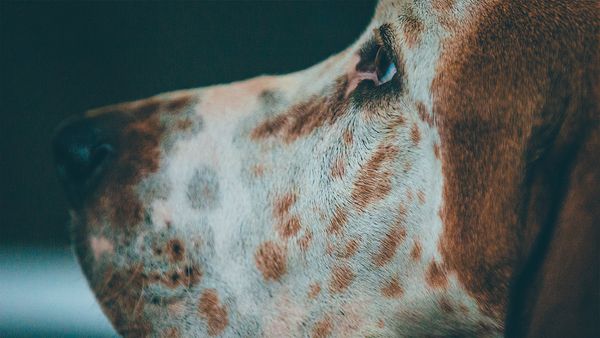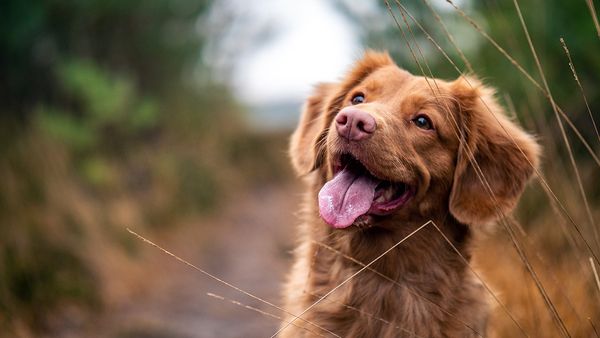Cataracts are not only a human disease. Dogs suffering from cataracts is also a common situation. Dogs have the highest probability of having complications after suffering from cataracts among all animals. Most people think that only older dogs will get cataracts, but in fact, dogs of every age stage may suffer from cataracts. In three minutes, clearly understand cataract treatment and prevention. If you click on this article, it means you are currently troubled by the eye condition of your dog at home. This article is written for you by the garden keeper! Extended reading: What should I do about dog eye discharge? Common types of discharge + introduction to eye diseases! The following points are the key points of this article: What happens to the eyeball with cataracts? Common causes of canine cataracts. Treatment methods for cataracts. How to prevent dogs from suffering from cataracts. Next, the keeper will tell everyone why not only old dogs can get cataracts and how cataracts will affect the health of dogs. The troubles of dog parents are visible to the keeper. This article is dedicated to parents who love their furry kids. OPEN Table of Contents: What is cataract? What are the symptoms of cataracts in dogs? Why do dogs get cataracts? How to judge the degree of cataracts? Can over-the-counter eye drops treat cataracts? Cataract surgical treatment. Cataract surgery cost. Will dogs fully recover after cataract surgery? How to prevent canine cataracts? Summary. What is cataract? What are the symptoms of cataracts in dogs? The eyeball is like a camera with a lens for focusing. Cataracts are when the lens of the eyeball becomes cloudy, affecting the dog’s vision. Dogs suffering from cataracts are visually obstructed and will have problems such as decreased vision, photophobia, and being easily frightened. In the later stages of the disease, it may even lead to blindness. We can detect whether our babies have signs of cataracts by observing several behaviors of dogs in daily life. Let’s take a look with the keeper. Observe the dog’s eyes more often in daily life. Are they white? There are also the following multiple cataract symptoms. If there are, pay more attention! Slight white objects appear in the dog’s eyeballs. White lumps or spots appear on the eyeball. This is likely a symptom of cataracts. Looking into the distance with an empty gaze. Due to the affected vision, distant things cannot be clearly identified. Therefore, they can only look in the general direction of sounds or targets. Often bump into things. After the vision is affected, the things seen are relatively blurry. Dogs that originally had no problems living at home but often bump into things recently should be especially noted. Often bark at the air. Cataracts may also cause diplopia. There will be more than one appearance of an object. Psychologically, dogs will feel strange and fearful, leading them to bark inexplicably or be emotionally tense from time to time. Dog parents who usually pay special attention to their dogs’ behaviors can be more sensitive and directly feel if there is something abnormal with their dogs. Through simple daily behavior observation, let’s see if there are these phenomena in our babies and jointly prevent the threat of cataracts to our babies. Why do dogs get cataracts? The cause of cataracts in dogs. Most people think that the reason is that dogs age and the lens ages. But in fact, there are also many younger dogs suffering from cataracts. What are the reasons? The eye is impacted by external forces. Due to scratches or collisions, the lens capsule is ruptured, increasing the probability of cataract occurrence.
Certain dog breeds, particularly Poodles, Dachshunds, and Schnauzers, are prone to developing cataracts. The breed of a dog can also influence the likelihood of developing cataracts. For instance, Bichon Frises tend to develop cataracts rapidly in the early stages, which requires special attention. Overexposure to sunlight and excessive ultraviolet radiation can lead to eye abnormalities. Dogs with other health conditions, such as diabetes, may also be at a higher risk of developing cataracts. These factors all contribute to the increased risk of cataracts in dogs, which are not exclusive to older dogs. Pet parents should regularly monitor their dogs’ eye health. Extended reading: How much do you know, owner? Can dogs eat chocolate? A comprehensive guide to dog diets and a detailed analysis of canine pancreatitis! How to care for dogs with medical conditions? How to adjust their diet? The following is a detailed guide on cataract care provided by the pet expert. How to determine the severity of cataracts? Cataracts can generally be divided into three stages: early, developmental, and mature. Each stage presents its own set of symptoms. Early detection and treatment in the early and developmental stages have a higher chance of complete recovery. However, if detected and treated only in the mature stage, there is a high risk of blindness. Let’s examine the symptoms corresponding to the three stages: Early stage: The eyeball may have slight white spots or patches, which are not very noticeable and have minimal impact on vision. Immature stage: The entire surface of the eyeball is affected, presenting a grayish-white haze, which may affect vision, especially in low-light environments. When both eyes are affected, the impact on vision is even greater. Mature stage: The eyeball is covered with a very noticeable white haze, preventing light from reaching the retina, and at this stage, the dog may be completely blind. Dogs in the mature stage of cataracts may see as if a thick white veil is covering their eyes. The three stages outlined above describe the development process of cataracts, and the earlier they are detected and treated, the better the outcome. However, symptoms in the early stage are not obvious and can easily be overlooked, often leading to detection only in the immature stage, which requires more effort to treat. Regularly check your dog for eye health to prevent eye problems. Can over-the-counter eye drops treat cataracts? Using eye drops to treat cataracts is only effective in the early stages, as they can help control and slow down the progression of the condition. However, the effectiveness of eye drops diminishes after the immature stage. Although it is easy to purchase eye drops for treating dogs, the severity of cataracts also affects the effectiveness of treatment. It is best to consult with a professional veterinarian and follow their treatment recommendations. Cataract surgery treatment: The only way to completely remove cataracts is through surgical treatment, which includes methods such as ultrasonic乳化法、囊外摘除法、囊内摘除法, etc. The main surgical process involves inserting through the cornea, creating a circular opening in the lens, and then suctioning out the cataract before inserting an artificial lens. Cataract surgery costs: The cost of cataract surgery is approximately $30,000 to $60,000 (including surgery and artificial lens costs) for pet parents to consider. It is a significant expense, so it is best to prevent cataracts and protect the eye health of your dog before they develop.
















Will dogs fully recover after cataract surgery? After a successful cataract surgery, about 80-90% of dogs’ vision can approach a normal state. However, since the dog’s eyes are prone to inflammation after surgery, there are also more scars. Scars will slightly reduce vision. Supplementation of anti-inflammatory drugs can reduce postoperative inflammation. The best way to help reduce the risk of turbidity is to implant an intraocular lens, control uveitis and supplement antioxidants daily. Special attention is needed after surgery: Although the pet’s vision has returned to normal, sometimes they still experience some visual impairments. How can we prevent canine cataracts? Since most cataracts are hereditary, it is difficult for pet parents to prevent them, but they can provide help in diet. Supplementing blueberries, broccoli, pumpkin, cold-water fish (such as salmon, cod, etc.). Fruits and vegetables are rich in vitamin C, and fish are rich in fish oil. These are all helpful for dog eye care. Regular vision health check-ups are also very important. Because in the early stage of cataracts, it is very difficult for us to observe abnormalities in dogs with the naked eye. Regular check-ups can help detect cataracts early. In conclusion, cataracts are one of the most common eye diseases in dogs. Considerable effort is needed in terms of symptoms and treatment. In addition to being affected in vision, it may subsequently cause harmful complications. Therefore, it is even more important to determine whether there are signs of cataracts in our babies in the early stage. The curator also makes a small summary at the end. Let’s all take care of the windows of our babies’ souls. Like humans, we can eat more fruits and vegetables containing vitamin C and take fish to supplement fish oil in daily diet. Avoid excessive exposure to sunlight to prevent ultraviolet rays from harming the dog’s eyes. If the eyes are excessively collided or injured, take the dog for an examination immediately. When signs of cataracts are found, seek the help of a veterinarian as soon as possible for early treatment. Prevention is definitely better than cure. Pay more attention to daily diet and living habits. Letting dogs maintain good physical fitness is the key to health. Limited-time experience set, only 50 yuan, and there is also a free shipping coupon. Click to use it.?? petdaddy’s latest articles: [Meaning of Cat Postures] Understand 18 Kinds of Cat Body Language in 3 Seconds 2023-02-03 [What to Do When Cats Fight] Prevention of Cat Fights + Emergency Mediation Guide for Multi-Cat Families Must Read 2023-01-26 Notes for New Dog Owners: 7 Must-Have Items, Care Instructions and Must-Know Knowledge for Raising Dogs 2023-01-23 [What to Do When Cats Keep Meowing] Help You Understand the Reasons Why Cats Keep Meowing in 3 Minutes and How to Deal with It? 2023-01-08 [Foods Cats Can Eat] 20 Human Foods Can Also Be Used for Cat Tonics! Cats Eat These to Live Longer! 2022-12-24 Thanks for watching. If you find the curator’s article very useful, you can click the share button below to share it to LINE and FB for all those in need of information. You are also welcome to join the pet parents’ LINE discussion community and discuss pet experiences with 670 pet parents.
Cataracts are not only a human disease. Dogs suffering from cataracts are also a common situation. Dogs have the highest probability of having complications after suffering from cataracts among all animals. Most people think that only older dogs will get cataracts, but in fact, cataracts can occur at every age stage. In 3 minutes, clearly understand cataract treatment and prevention. If you click on this article, it means you are currently troubled by the eye condition of your dog at home. This article is written for you by the park director! Extended reading: What should I do about dog eye discharge? Common discharge types + eye disease introduction! The following points are the key points of this article: What happens to the eyeball with cataracts? Common causes of canine cataracts. Treatment methods for cataracts. How to prevent dogs from getting cataracts. Next, Director Mao will tell everyone why not only old dogs can get cataracts and how cataracts will affect the health of dogs. The troubles of parents of furry kids are visible to the director. This article is dedicated to parents who love their furry kids. OPEN Table of Contents: What is cataract? What are the symptoms of cataracts in dogs? Why do dogs get cataracts? How to judge the degree of cataracts? Can over-the-counter eye drops treat cataracts? Cataract surgical treatment. Cataract surgery cost. Will dogs fully recover after cataract surgery? How to prevent canine cataracts? Summary. What is cataract? What are the symptoms of cataracts in dogs? The eyeball is like a camera with a lens for focusing. Cataracts are when the lens of the eyeball becomes cloudy, affecting the dog’s vision. Dogs with cataracts are visually obstructed and will have problems such as decreased vision, photophobia, and being easily frightened. In the later stages of the disease, it may even lead to blindness. We can detect whether our babies have signs of cataracts by observing several behaviors of dogs in daily life. Let’s take a look with Director Mao. Observe the dog’s eyes more often in daily life. Are they white? There are also the following multiple cataract symptoms. If there are, pay more attention! Slight white objects appear in the dog’s eyeball. White lumps or spots appear on the eyeball. This is likely a symptom of cataracts. Looking into the distance with an empty gaze. Due to the affected vision, distant things cannot be clearly identified. Therefore, they can only look in the general direction of sounds or targets. Often bump into things. After the vision is affected, the things seen are relatively blurred. Dogs that originally had no problems living at home but often bump into things recently should be particularly noted. Barking at the air from time to time. Cataracts may also cause diplopia. There will be more than one appearance of an object. Psychologically, dogs will feel strange and fearful, leading them to bark inexplicably or be in a state of tension. Parents of furry kids who usually pay special attention to the behavior of dogs can more sensitively directly feel that there is something abnormal with the dog. Through simple daily behavior observation, see if there are these phenomena in your baby at home and jointly prevent the threat of cataracts to our babies. Why do dogs get cataracts? The cause of dogs getting cataracts. Most people think that the reason is that dogs age and the lens ages. But in fact, there are also many younger dogs suffering from cataracts. What are the causes? The eye is impacted by external forces. Due to scratches and collisions, the lens capsule is ruptured, increasing the probability of cataract occurrence.
Genetic diseases in dogs themselves. In particular, dog breeds such as poodles, dachshunds, and schnauzers are all breeds prone to cataracts. There is also a relationship between a dog’s breed and the occurrence of cataracts. For example, cataracts in Bichon Frises develop rapidly in the early stage and require special attention. Excessive exposure to sunlight and excessive ultraviolet radiation can lead to eye abnormalities. Dogs themselves have other diseases. For example, diabetes can also affect the chance of cataracts. These are all reasons that increase the risk of cataracts in dogs. Cataracts are by no means exclusive to old dogs. Pet parents should also observe the eye health of their dogs at all times. Extended reading: How many do you know, master? Can dogs eat chocolate? Dog diet collation. Analysis of canine pancreatitis! How to care for a sick dog? How to adjust the diet? Next, Director Mao will tell you more care-related information about cataracts. How to judge the degree of cataracts? The severity of cataracts can be roughly divided into three stages: initial stage, developmental stage and mature stage. Each stage has its own symptoms. If it is discovered in the initial and developmental stages, the chance of complete cure in treatment is relatively high. If it is discovered and treated only when it is mature, there is actually a very high chance of blindness. Let’s take a look at the following three stages and see what corresponding symptoms there are? Initial stage: There will be some slight white dots or white patches on the eyeball, but they are not obvious. At this time, the impact on vision is relatively small. Immature stage: The entire surface of the eyeball is affected. A grayish-white fog can be seen. Vision may be affected, especially in environments with weak light. When both eyes are affected, the impact on vision is even greater. Mature stage: At this time, the eyeball is covered with a very obvious white fog. Light cannot enter the retina. At this stage, vision may be completely lost. In dogs with mature cataracts, it is as if a thick layer of white gauze is covering the eyes. The above three stages roughly illustrate the development process of cataracts. The earlier it is discovered, the better the treatment effect. But the symptoms in the initial stage are not obvious and are easily overlooked by us. Often because of this, the problem is not discovered until the immature stage. At this time, more effort is required to start treatment. Let dogs develop the habit of regular check-ups to prevent eye problems. Can over-the-counter eye drops treat cataracts? Applying eye drops to treat cataracts is only applicable in the early stage of cataracts. The symptoms can be controlled and delayed by applying eye drops. But after the immature stage, the effect of using eye drops is not so good. Although we can easily buy eye drops to treat dogs, because the degree of cataracts also affects the treatment effect, it is best to let a professional veterinarian judge and follow the doctor’s instructions for treatment. Surgical treatment for cataracts. The only way to completely eradicate cataracts is through surgical treatment. The main surgeries include ultrasonic phacoemulsification, extracapsular extraction, and intracapsular extraction. The main surgical process is to insert from the cornea, make a circular opening on the lens, then aspirate the cataract, and finally insert an artificial lens. Cost of cataract surgery. The cost of cataract surgery is approximately 30,000 to 60,000 yuan (including the surgical fee and the cost of the artificial lens) for reference by pet parents. It is a considerable expense. Therefore, it is best to take preventive measures and protect the eye health of dogs before they are affected.
Will dogs fully recover after cataract surgery? After a successful cataract surgery, approximately 80-90% of dogs can regain vision close to normal. However, post-surgery, dogs’ eyes are prone to inflammation, leading to more scars. These scars can slightly reduce vision. Supplementing with anti-inflammatory medication can alleviate post-surgical inflammation. The best method to reduce the risk of cloudiness is to implant an artificial lens, control uveitis, and supplement with antioxidants daily. Special attention is needed post-surgery: although a pet’s vision may return to normal, they may still experience some visual impairments. How can we prevent canine cataracts? As most cataracts are hereditary, it is difficult for pet parents to prevent them. However, dietary support can be provided, such as supplementing with blueberries, broccoli, pumpkin, cold water fish (salmon, cod, etc.), fruits, and vegetables rich in Vitamin C, and fish rich in fish oil. These are all beneficial for the eye health of dogs. Regular vision health checks are also important because in the early stages of cataracts, it is difficult to observe any abnormalities in dogs with the naked eye. Regular checks can help detect cataracts early. In summary, cataracts are one of the most common eye diseases in dogs. They require considerable effort in terms of symptoms and treatment and can affect vision, potentially leading to harmful complications. Therefore, identifying signs of cataracts in pets at an early stage is crucial. The gardener also makes a small summary at the end, and everyone should work together to monitor the windows to the soul of pets. Like humans, in daily diet, it is advisable to consume more fruits and vegetables rich in Vitamin C and to supplement with fish to provide fish oil. Avoid excessive exposure to sunlight to prevent ultraviolet rays from harming the eyes of dogs. If the eyes experience excessive collision or injury, take the dog for a check-up immediately. If signs of cataracts are detected, seek veterinary assistance promptly for early treatment. Prevention is definitely the best approach to health care. Paying more attention to daily diet and lifestyle habits ensures that dogs maintain good physical fitness, which is the key to health. Limited experience group, only 50 yuan, with free shipping discount code, click to use. For the latest articles from PetDaddy: [Understanding Cat Postures] Decode 18 Types of Feline Body Language in 3 Seconds, 2023-02-03 [What to Do When Cats Fight] Preventing Cat Fights + Essential Emergency Peacekeeping Guide for Multi-Cat Households, 2023-01-26 Essential Items and Knowledge for New Dog Owners: 7 Must-Have Items, Care Tips, and Related Knowledge, 2023-01-23 [What to Do When Cats Keep Meowing] Understand the Reasons Behind Cats’ Constant Meowing in 3 Minutes and How to Handle It, 2023-01-08 [Foods Cats Can Eat] 20 Human Foods That Can Also Nourish Cats! These Foods Can Make Cats Live Longer, 2022-12-24 Thank you all for watching. If you find the gardener’s articles very useful, you can click the share button below to share on LINE, FB to all who need information. You are also welcome to join the Pet Parents LINE discussion group to discuss pet experiences with 670 pet parents.
